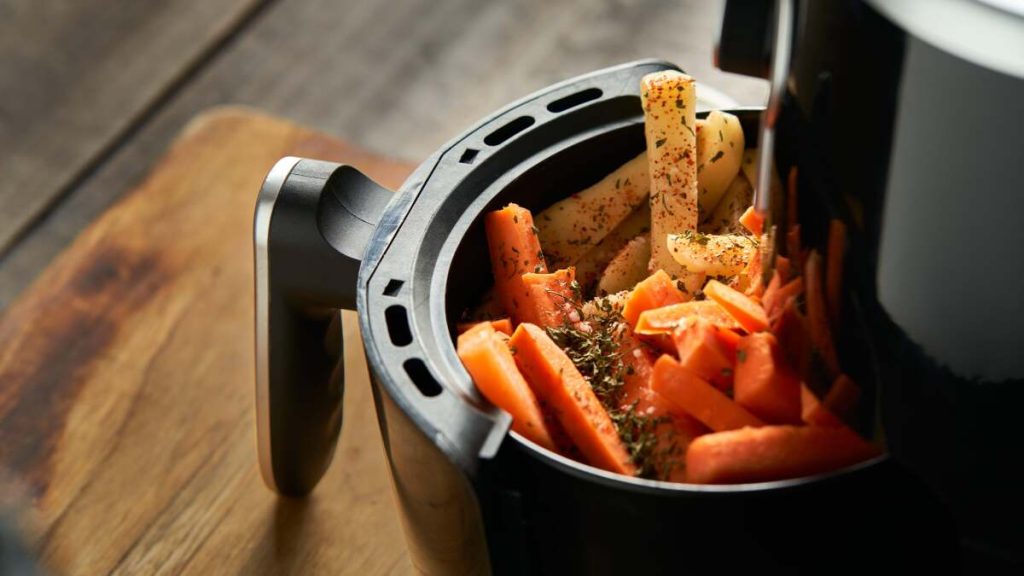Air fryers have become a popular kitchen appliance, touted as a healthier alternative to traditional deep-frying. They promise crispy, delicious food with a fraction of the oil, making them an appealing choice for health-conscious individuals. However, alongside the benefits, concerns have been raised about the potential health risks associated with air fryer use. Could your air fryer be slowly poisoning you and your family? This article explores how air fryers work, their benefits, potential side effects, and tips for safe use.
How Air Fryers Work
Air fryers operate by circulating hot air around the food at high speeds, cooking it evenly and creating a crispy exterior. Here’s a step-by-step look at the process:
- Heating Element and Fan: The air fryer contains a heating element, usually located near the top, and a powerful fan. When turned on, the heating element warms up the air inside the fryer.
- Rapid Air Circulation: The fan circulates the hot air around the food at high speeds, ensuring that heat is distributed evenly.
- Cooking Chamber: Food is placed in a perforated basket inside the cooking chamber. The hot air moves through these perforations, cooking the food from all angles.
- Maillard Reaction: The combination of heat and air circulation promotes the Maillard reaction, which gives food its crispy texture and rich flavor, similar to traditional frying but with less oil.

Benefits of Using an Air Fryer
- Healthier Cooking: Air fryers use significantly less oil than traditional frying methods, reducing fat and calorie intake. This can be beneficial for weight management and overall health.
- Convenience: Air fryers are easy to use and often come with preset cooking programs for various foods. They also typically cook food faster than conventional ovens.
- Versatility: Air fryers can be used for a variety of cooking methods, including frying, roasting, baking, and grilling.
- Reduced Cooking Odors: Since air fryers are enclosed systems, they produce fewer cooking odors compared to deep fryers.
- Easy Cleanup: Many air fryer components are dishwasher-safe, making cleanup quick and easy.
Potential Side Effects and Health Risks
Despite the benefits, there are several potential health risks associated with air fryer use:
- Acrylamide Formation: Acrylamide is a chemical that forms in starchy foods when they are cooked at high temperatures. It has been linked to cancer in animal studies, and while its impact on humans is still being studied, it is considered a probable human carcinogen by the International Agency for Research on Cancer (IARC). Cooking foods like potatoes at high temperatures in an air fryer can lead to acrylamide formation.
- Non-Stick Coatings: Many air fryers have non-stick coatings made from polytetrafluoroethylene (PTFE), commonly known as Teflon. When overheated, PTFE can release toxic fumes that are harmful if inhaled. These fumes can cause flu-like symptoms in humans and can be fatal to birds.
- Plastic Components and BPA: Some air fryers contain plastic parts that may release Bisphenol A (BPA) into food when heated. BPA is linked to various health issues, including hormonal disruptions and increased risk of certain cancers. Choosing BPA-free air fryers can help mitigate this risk.
- Phthalates: Phthalates are chemicals used to make plastics more flexible and are often found in kitchen appliances. When heated, phthalates can leach into food and have been associated with endocrine disruption and reproductive harm.
Mitigating the Risks
While these potential risks are concerning, there are steps you can take to minimize them and safely enjoy the benefits of your air fryer:
- Choose Safer Models: Invest in high-quality air fryers that use safer materials. Look for models with stainless steel components instead of plastic and avoid those with non-stick coatings that contain PTFE. Many manufacturers now offer BPA-free and phthalate-free options.
- Cook at Lower Temperatures: Reducing the cooking temperature can help minimize the formation of acrylamide. Most foods can be effectively air-fried at temperatures below 350°F (175°C), which is sufficient to achieve a crispy texture without excessive acrylamide production.
- Proper Ventilation: Ensure your kitchen is well-ventilated when using the air fryer. Proper ventilation can help disperse any potentially harmful fumes released during cooking.
- Avoid Overcrowding: Overcrowding the air fryer basket can lead to uneven cooking and potentially increase the risk of acrylamide formation. Cook in batches if necessary to ensure even and thorough cooking.
- Regular Cleaning: Regularly clean your air fryer to prevent the buildup of grease and food residue, which can lead to the release of harmful compounds when reheated.
Conclusion
Air fryers offer a convenient and healthier alternative to traditional frying methods, but it is essential to be aware of the potential risks they may pose. By choosing safer models, cooking at lower temperatures, ensuring proper ventilation, and maintaining regular cleaning, you can minimize these risks and continue to enjoy the benefits of your air fryer. Stay informed and take the necessary precautions to ensure that your beloved kitchen appliance does not unknowingly poison your family.
Get More Info: https://www.timelinetale.com/